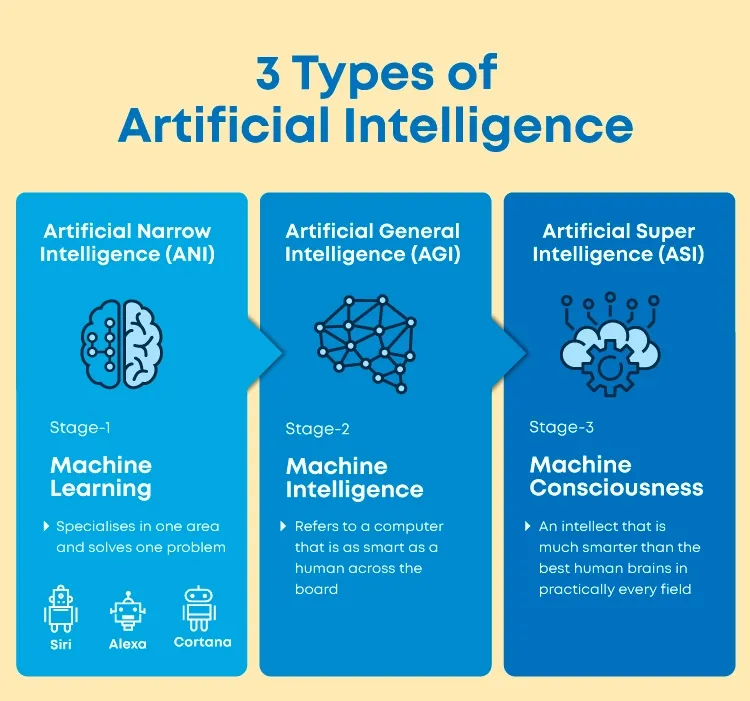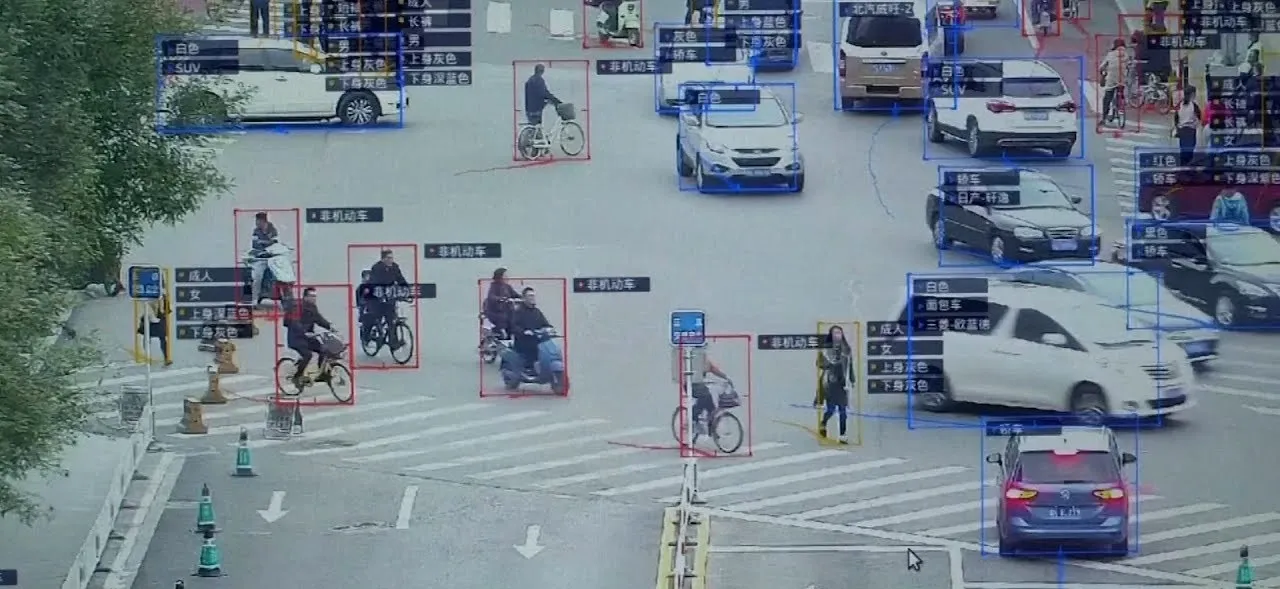AI has been around for decades, but it was not until recently that it took off in the public consciousness. In 2016 Google's AI computer program AlphaGo made headlines when it defeated the 18-time world champion at the board game Go, becoming the first computer program ever capable of beating a world champion at Go. The number of possible configurations on the board in Go is more than the number of atoms in the universe, making it much more complex than chess. Google's historic event made international headlines, but as you may have guessed, China's renewed interest in AI is not linked to winning at board games but rather more profound social and economic implications.
In 2017, China announced its bold ambition to become the world leader in artificial intelligence (AI) by 2030 and entered a race with the US to become the first country to develop AI on a large scale. China recognized AI’s potential to fuel long-term economic growth and maintain performance legitimacy. China has poured massive amounts of money into AI, but the US as the leading technology hub is not that easily thrown off the throne.
"Whoever becomes the leader in this sphere will become the ruler of the world" - Vlademir Putin, 2017
What is Artificial Intelligence?
In the early 18th century, Thomas Newcomen built the first practical steam engine, unknowingly altering the course of humankind to come. The steam engine became the backbone of the industrial age and eventually led to the creation of airplanes, trains and automobiles, transforming society entirely. So how do we define inventions that alter production and lead to disruption of multiple sectors? Inventions, like the steam engine and electricity, are coined General Purpose Technologies (GPT) given their disruptive nature and the innumerable use-cases.
There is a broad consensus among scholars that AI is a GPT given its broad spectrum of use-cases, and it may be part of the Fourth Industrial Revolution among other technologies. The inevitable progress in AI technology will enable individualization and personalization of products at scale. In medicine, doctors will be able to personalize treatment based on genes and data about previous patients. In entertainment, Netflix will be able to make custom movies with virtual actors of your choice at the press of one button. In transportation, self-driving cars will be the new norm, both freeing up the time used driving and drastically minimizing accidents by human error.
How does AI learn?
To make the artificial intelligence intelligent, it needs data. That’s how it learns. Analysing massive amounts of data, also called big data. Who can amass that kind of data? The technology companies such as Google, Facebook, Tencent, Huawei, etc. Therefore, a prerequisite for AI dominance becomes grooming and creating an environment for these companies to grow. In turn, these companies require people to extract data from. This is where China’s competitive advantage comes into play - their huge population of 1,4 billion people, roughly 20% of the world’s population. Giving Chinese companies access to a huge population to extract data, on the terms of the Chinese government.

”Advanced technology is the sharp weapon of the modern state. An important reason that Western countries were able to hold sway over the world in modern times was that they held the advanced technology.” - China's President Xi Jinping
Why is AI important to China?
The strong productivity growth spurred by the pro-market reforms in 1978, when the Chinese economy was opened, has since produced double-digit growth rates, leaving the West looking stagnating in comparison. The Communist Party consolidated power by delivering skyrocketing growth rates, and rapidly pulling people out of poverty. The poverty reduction in China speaks for itself. Between 1981 and 2015 the poverty rate was reduced from 88% of the population to just 0.7% of the population, that’s about 900 million people pulled out of poverty. But in the last decade, the Communist Party has struggled to keep up with the double-digit growth rates as the economy has matured. The gap between the growth rate in China and the US, which was once so large, is slowly dissolving. The Communist Party needs to find a new way to boost the economy to keep its tight political grip on the country and maintain performance legitimacy for its citizens.
AI opens the possibility for states to automate and streamline processes to cut expenses and become more competitive in global markets. Wages, which usually are the largest expense for businesses, can be cut in some areas due to AI eliminating jobs, as seen in the industrial revolution in the 17th and 18th century. The AI development will likely impact the economies as the internet did, the winners will be the countries that lead the way and create competitive AI companies. The technology companies that the internet brought us, mostly created oligopolies or monopolies, and with the AI companies we will most likely see the same pattern of market consolidation.
A substantial part of China’s national strategy is to create Smart Cities, consisting of self-driving cars, 5G networks, smart grids, and high-speed trains. A creation of interconnected cities, based on AI, leading to greater surveillance of citizens. Sensetime, a Chinese AI company, already delivers urban surveillance cameras with facial recognition technology to more than 100 cities in China and overseas. The intent is to track everything from traffic accidents to crime and make life safer, but in the background lurks a darker reality of surveillance and oppression. With AI making sure nobody opposes the Communist party, the political stronghold becomes even tighter.

New Chinese legislation has been drafted on data privacy, restraining tech companies from abusing their customers’ data. Concurrently, government crackdowns on the biggest Chinese tech firms immerse, all while the lack of laws preventing government intrusion in their citizens’ data becomes more apparent. The big Chinese tech companies have long been accused of handing over sensitive data to the communist party. These concerns were recently seen with the UK banning Chinese Huawei as a supplier to the new 5G network infrastructure. If China can foster the next big AI companies that control the technological infrastructure of the future, they will gain massive international leverage and data on enemies. The real question then becomes: Will the smart cities be designed for the people living in them, or for the government and tech companies that run them?
How far is China from taking the lead in the AI race?
China have developed the capabilities to produce competitive digital giants in just a couple of decades. “But how?” you might ask. The combination of government support and flourishing entrepreneurship pushed the Chinese tech sector forward. At first, Chinese tech companies copied the US platforms (Facebook, YouTube, etc), but as time went by, the innovative and technical capabilities fostered dominant domestic services like WeChat and TikTok. Nowadays, the Chinese and American capabilities seem to revolve around different areas of specialization.
China vs. USA
China’s increased focus on AI has resulted in an edge over the US in terms of aggregation of data and societal adoption, where it outcompetes the US. The larger Chinese population leads to more data, and the strategic legislative focus from the Communist party has made adoption of AI compulsory rather than voluntary. This has resulted in major advances in the field of AI in China. The pandemic helped boost the development and adoption of AI, and in China robotics in factories and automated vehicles for delivery of food and goods, has propelled. A strong competitive advantage that China brings to the table is facial recognition, where it without a doubt has the most advanced companies.
Barriers for China becoming dominant in AI seems to revolve around education. Few Chinese top universities have the competences as American universities. The Chinese government is aware of this and has been aggressively investing in and promoting education within this field. Resulting in China overtaking the US in AI journal citations in 2020, reaching a milestone not previously seen as obtainable. Though more AI journal citations, the quality of the papers appears to be lower given fewer peer-reviewed articles. Furthermore, statistics show that even though a third of the world’s top AI talent is from China, only a tenth work in China. Another barrier holding China back from taking the lead, is that a substantial portion of the growth in the technology sector in China has come from the acquisition of foreign technology companies and therefore not from internal innovation.
Although large Chinese investments and focus on AI, they still lack behind the US in talent, research, and development. Studies show that the US takes the lead in terms of talent and research within the AI field, both in terms of quality and researchers per capita. This is probably a result of technology hubs like Silicon Valley nurturing talent in these environments. When removing government from the equation and examining private investment in AI, the US receives more than double that of China, cementing that the US still places at number one for the time being.
Another area, where the US has the upper hand, is in terms of hardware, and in particular the production of sophisticated semiconductors. China has tried for decades to become self-sufficient in semiconductor technology, which is used in everything from smartphones, cars, computers and in AI. Leading us to the current conflict with Taiwan, where China sees Taiwan as a breakaway province and wants it to be part of China again. Many Taiwanese disagree and wish for independence from China. The conflict has been heating up during recent years, and part of China’s renewed aggression is most likely bound in the geopolitical importance of Taiwan, who controls 60% of the global market for semiconductors. This places Taiwan at the centre of aggression between China and the US in the race for AI supremacy.
Conclusion
The Fourth Industrial Revolution is coming and AI is going to play a central role in it. Today, China must be assessed as a full spectrum competitor of the US in commercial and national security applications of AI. China is not trying to master AI, it is succeeding. China takes the lead in some areas of AI, hereunder manufacturing robotics, facial recognition, aggregation of data and societal adoption. The US, on the other hand, has substantially more access to talent and research. The US leads in education and investment, and have better qualifications in terms of hardware. For the time being, China is not taking the lead, but there is a close race going on between the US and China that will take many years.
Get the weekly deep dive you'll actually read in your inbox.
Business and tech investigative articles in 10 minutes or less.
100% free. We don't spam. Unsubscribe whenever.
